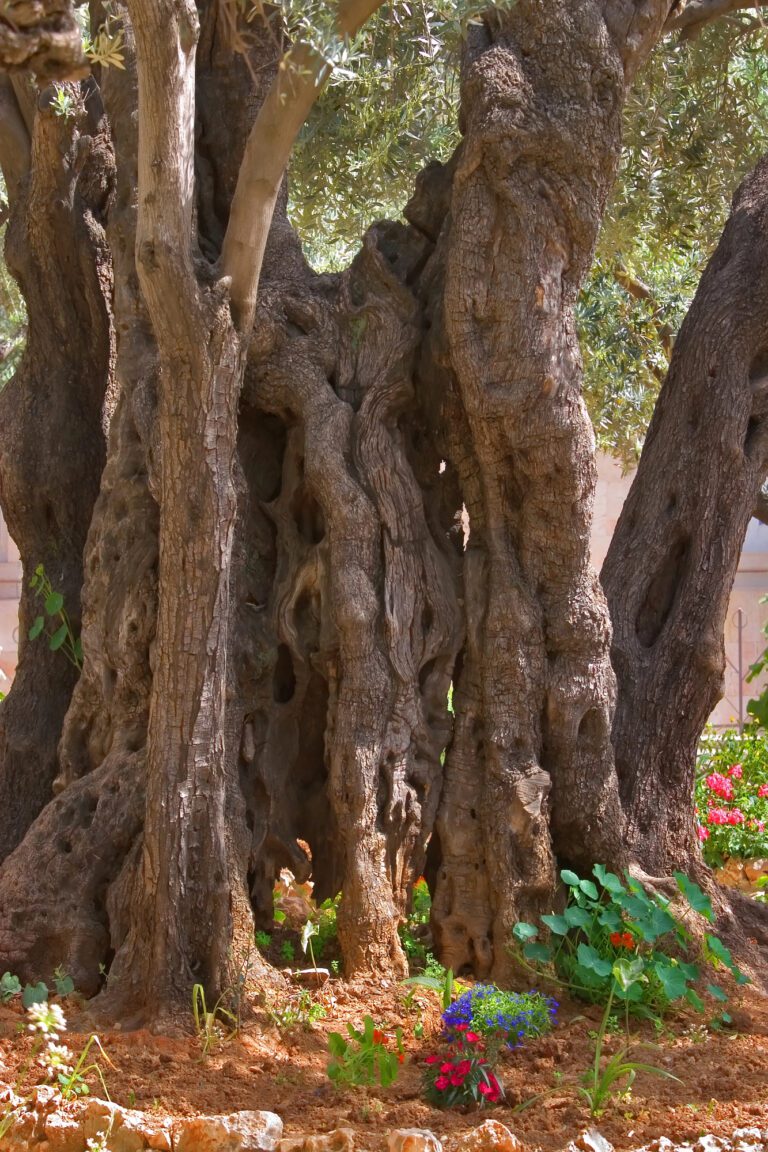The Olive Tree




The Olive Tree
The Garden of Gethsemane in Jerusalem is renowned as the place where Jesus prayed on the night of His betrayal and arrest (Mark 14:32–50). According to Luke, Jesus' anguish in Gethsemane was so profound that He sweat drops of blood (Luke 22:44).
The Olive Tree’s Biblical and Modern-Day Significance
At Olive Blessings, we import all our reverent artworks from the finest Christian craftsmen in Bethlehem and Jerusalem. Each piece is lovingly hand-carved by our talented and dedicated artisans. Every item, including our olive wood nativity sets, stables, statues, crosses, rosaries, and Bibles, is carefully designed to capture the spirit of the Holy Land.
The most meaningful aspect of our art is not only that it directly supports the Christian community of the Holy Land but also that it originates from the land of the Bible—the birthplace of our Lord and Savior Jesus Christ, where He lived, ministered, sacrificed for our sins, and rose from the dead. We trust that you will find our products to be of the highest quality, and we pray that each item will be a blessing to all who buy, give, and receive.
The Olive Tree in the Bible
The olive tree (Olea europaea) is a noble evergreen native to the warm climates of the Holy Land and the Mediterranean basin. It is short and squat, with numerous uneven leafy branches adorned with oblong, silvery-green leaves. In May, olive trees burst into bloom with tiny white flowers that blossom in groups in front of every leaf. In October, the fruit is harvested, and the trees are pruned.
Olive trees grow slowly and can survive for thousands of years; in fact, the olive trees in the Garden of Gethsemane, where Jesus prayed, still exist today.The olive tree plays a prominent role in both the Old and New Testaments. As an ancient symbol of peace, wisdom, glory, faith, and purity, it was an olive branch that the dove returned to Noah, olive wood that formed the cross, and the Mount of Olives where Jesus ascended to Heaven. Jesus Himself was anointed with olive oil and is called “the Messiah,” meaning “the Anointed One.”
In modern times, churches in the Holy Land use only olive oil to light the altar’s oil lamps, symbolizing blessing and the peace and reconciliation between God and mankind.
Bethlehem Olive Wood
Olive trees are a protected species in the Holy Land. They must be at least 150 years old before their wood can be cultivated. Mature trees are pruned every other year to eliminate old branches, allow space for new, healthier growth, and expose the inner parts of the tree to sunlight to facilitate growth.
At Olive Blessings, we use only the wood discarded from the tree’s pruning to create our stunning and environmentally friendly art. Many olive trees are said to be several centuries old, and darker wood from these trees is believed to date back to the time of Christ.
Bethlehem olive wood is dense and heavy, with colors ranging from light cream to rich golden brown, featuring irregular dark brown grains. The unique grains in olive wood add depth and warmth, making it one of the most beautiful and attractive natural materials for creating a vast range of ecclesiastical artifacts.
Carving Phases
Green raw olive wood is pruned into short branches and logs. After sealing the ends with wax, it is sorted and stored in a cool warehouse for at least six to twelve months to reduce its high water content (up to 65%) before kiln drying.
Olive wood contains a significant amount of oil and acids, making it challenging to dry without shrinking or developing fissures. At Olive Blessings, we pay special attention to this process, using the latest kiln-drying technology to ensure well-dried products with water content as low as 8%, creating art that is both beautiful and sacred.
To produce high-quality olive wood carvings, several steps are followed:
First carving phase: The wood is hewn into blocks according to the size of the sculptures to be produced and then kiln dried.
Second phase: After further sizing, the wood is covered with dry sawdust for 3 to 6 months to absorb the wood’s oil.
Third phase: This crucial phase involves patiently hand-carving fine details, sanding, and decorating by skilled artisans. As these features are carved from memory, no two pieces are exactly the same.
Fourth phase: Finishing touches involve a time-consuming and detail-oriented process; each piece is meticulously inspected before being sprayed with a transparent sealant that protects it from weather variations and highlights the material’s natural color.
Fifth phase: Prior to packing, every item undergoes strict quality control, with special care given to items designated for export
A Traditional Craft
Determining the exact origin of the tradition of producing religious items in Bethlehem is challenging. However, it is said that over 400 years ago, Franciscan and Roman Orthodox monks taught locals how to handcraft souvenirs for Christian pilgrims visiting the Holy Land to follow in the footsteps of Jesus Christ.
Materials such as olive wood, mother-of-pearl, terra cotta, beeswax, and tinted glass were used to create spiritual artifacts like those you see today. These art forms have been passed down through generations of craftsmen in the holy cities of Bethlehem and Jerusalem.
Among these trades, olive wood craftsmanship has developed the most. In recent decades, fine art schools and vocational centers have opened, and scholarships have been granted to talented artists to develop and modernize the trade.
While modern technology has made the process more efficient, each piece of Olive Blessings art is still hand-carved by a skilled artisan with at least six years of training. Today, Bethlehem and the surrounding region are home to one of the largest Christian communities in the Middle East, and their handmade Christian artwork provides daily sustenance to the majority of the population.
